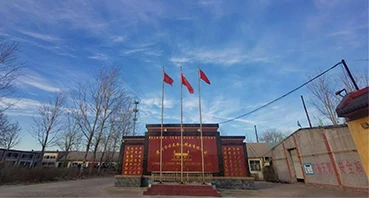what welding rod to use for cast iron
Mar . 05, 2025 00:55
Choosing the right welding rod is crucial when dealing with cast iron, a material known for its brittleness and unique composition. Unlike steel, cast iron contains a higher carbon content, leading to considerable challenges during welding procedures. To tackle these challenges, understanding the category of cast iron you are working with and selecting appropriate materials are essential steps in ensuring a successful weld.
For those working under tighter budgets, steel electrodes with a specialized coating can offer a compromise. Appropriately selected steel rods, such as ESt, allow practitioners to manage repairs economically. However, these electrodes trade off some degree of malleability and require precision to mitigate increased risks of cracking. Preheating the casting before welding plays a pivotal role across all electrode choices. By gradually elevating the temperature, usually between 400°F and 600°F, the risk of thermal shock—leading to immediate crack formation—diminishes significantly. Controlled cooling post-welding stabilizes the welded joint, reducing residual stress. Expert welders also emphasize peening between passes. This mechanical process compresses the weld material subtly as it cools, deterring the manifestation of tension-related cracks within the brittle base metal. Equally important is selecting a suitable welding technique—such as stick welding or TIG—according to both project requirements and material handling specifics. Finally, an often-overlooked facet involves the clean preparation of cast iron surfaces before commencing the weld. Completely eradicating oil, grease, paint, and impurities ensures that the weld material coalesces soundly with the cast substrate. In concluding, welding cast iron necessitates more than technical know-how; it requires a cultivated finesse and respect for the material’s intrinsic qualities. Assembling a nuanced approach dovetailed with a choice of specialized electrodes tailored to specific cast iron types can significantly mitigate issues such as cracking, resulting in a structurally sound repair or modification. Leveraging expert insight and practical experience, welders can transform what is traditionally perceived as a daunting task into an achievable feat of engineering. Such informed practices not only extend the lifespan of cast iron components but also enhance the structural integrity of critical assemblies across industries.


For those working under tighter budgets, steel electrodes with a specialized coating can offer a compromise. Appropriately selected steel rods, such as ESt, allow practitioners to manage repairs economically. However, these electrodes trade off some degree of malleability and require precision to mitigate increased risks of cracking. Preheating the casting before welding plays a pivotal role across all electrode choices. By gradually elevating the temperature, usually between 400°F and 600°F, the risk of thermal shock—leading to immediate crack formation—diminishes significantly. Controlled cooling post-welding stabilizes the welded joint, reducing residual stress. Expert welders also emphasize peening between passes. This mechanical process compresses the weld material subtly as it cools, deterring the manifestation of tension-related cracks within the brittle base metal. Equally important is selecting a suitable welding technique—such as stick welding or TIG—according to both project requirements and material handling specifics. Finally, an often-overlooked facet involves the clean preparation of cast iron surfaces before commencing the weld. Completely eradicating oil, grease, paint, and impurities ensures that the weld material coalesces soundly with the cast substrate. In concluding, welding cast iron necessitates more than technical know-how; it requires a cultivated finesse and respect for the material’s intrinsic qualities. Assembling a nuanced approach dovetailed with a choice of specialized electrodes tailored to specific cast iron types can significantly mitigate issues such as cracking, resulting in a structurally sound repair or modification. Leveraging expert insight and practical experience, welders can transform what is traditionally perceived as a daunting task into an achievable feat of engineering. Such informed practices not only extend the lifespan of cast iron components but also enhance the structural integrity of critical assemblies across industries.
Related Video
Copyright © 2025 Dingzhou Jinlong Metal Production Co., Ltd. All Rights Reserved. Sitemap | Privacy Policy




























